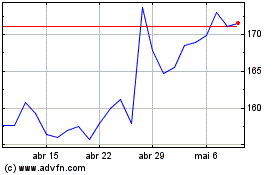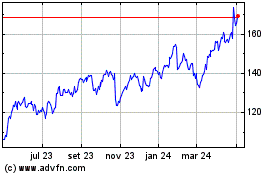By Yoree Koh
As Brenton Tarrant drove away from the New Zealand mosque where
he allegedly went on a shooting spree, only 10 people were tuned
into his live broadcast of the rampage on Facebook Live, according
to archived versions of his page.
But the video, which shows dozens of people inside the Al Noor
mosque in Christchurch being gunned down, has likely been viewed
millions of times in various formats across the internet. The
footage was recorded, repackaged and reposted on mainstream sites,
fringe destinations with looser restrictions and in the web's
darkest corners only accessible with special software.
Facebook Inc. and Google's YouTube were still working this
weekend to keep the video off their own sites.
The vast cloning of the footage underlines a stark reality in
the era of live online broadcasting: These videos can't be cut
off.
Artificial intelligence software isn't powerful enough to fully
detect violent content as it is being broadcast, according to
researchers. And widely available software enables people to
instantly record and create a copy of an online video. That means
the footage now lives on people's phones and computers, showing how
little control the major tech platforms have over the fate of a
video once it airs.
Archived versions of Mr. Tarrant's Facebook page indicate the
video was removed only minutes after it stopped airing, according
to social-media intelligence company Storyful, which viewed
archived versions of his page. Facebook said it was alerted by New
Zealand police shortly after the live stream began.
But by then, it was too late. Anyone with a link to the video
could have recorded it.
Facebook said that in the first 24 hours after the attack it
blocked or removed 1.5 million copies of the video from its site.
About 80% of those videos were cut off while they were being
uploaded to Facebook. That means 300,000 versions of the video
still sneaked through.
YouTube, owned by Google parent Alphabet Inc., said it has taken
down tens of thousands of postings of the video, while Twitter Inc.
said it suspended Mr. Tarrant's account and was working to remove
the video.
Facebook, Twitter and YouTube have stepped up their investments
in artificial intelligence tools and human moderators to detect and
remove content that violates their guidelines. These internet
giants have made progress in stamping out terrorist propaganda from
Islamic State militants, for example. They employ a shared database
of terrorist content that is assigned digital fingerprints called
"hashes" that detect visual similarities and automatically prevent
the content from being uploaded.
But these tactics can be circumvented if the footage is
doctored. Versions of Mr. Tarrant's video, for example, were edited
to imitate a first-person shooter game and appeared on Discord, a
messaging app for videogamers.
The software can also struggle to catch videos that aren't the
original, such as a recording from a mobile phone camera of the
video playing in a web browser. To try to tackle this, Facebook
says it is employing audio technology and also hashing other
uploads.
Live online broadcasting, which is exploding in popularity,
compounds the problem because it is challenging to monitor in real
time. The algorithms aren't yet equipped to decipher reality from
fiction, or detect certain moving images like guns held in
different positions.
Over the weekend, links to different versions and clips of the
rampage were readily available on multiple fringe sites such as
Gab, BestGore.com and DTube, an alternative to YouTube that has
little to no moderation. Links on the storage site Dropbox were
being circulated and still active Sunday.
The video was given a supercharged boost because of the way Mr.
Tarrant promoted it. Before the shooting spree, Mr. Tarrant
apparently posted his alleged intention to attack the mosque, and
provided links to the live stream and an accompanying manifesto
filled with white supremacist conspiracy theories on 8chan, an
anonymous messaging forum favored by extremist groups.
Part of the calculation, say internet researchers, was to take
advantage of 8chan's culture of archiving sensitive videos. By
giving a heads up to the 8chan community about the attack and then
posting a link to the live stream, Mr. Tarrant ensured that the
video couldn't be permanently deleted.
"You have these groups of people who consider themselves quasi
movements online and they believe they own the internet and as a
result these calls to action are almost rote memory," said Joan
Donovan, director of the Technology and Social Change Research
Project at Harvard University's Shorenstein Center. "They're just
part of the culture, so if someone says that they're going to
commit some kind of atrocity then you will see this downloading and
reuploading practice happen."
That could explain why, according to YouTube, the site has seen
an unprecedented volume of attempts to post original and modified
versions of the shooting video. A YouTube spokeswoman said that if
it appears a criminal act will take place the website will end a
live stream and may terminate the channel showing it. YouTube now
has 10,000 workers devoted to addressing content that violates its
rules.
Facebook appears to have become quicker at removing live
broadcasts after facing criticism it took too long after other
violent incidents. In 2017, a man in Thailand broadcast the murder
of his infant daughter and the video remained on the site for
roughly 24 hours.
This time, Facebook said its content-policy team immediately
designated the New Zealand shooting as a terrorist attack, meaning
any praise or support of the event violates the company's rules and
is removed.
But it is still having to improvise. Facebook said it initially
allowed clips and images showing nonviolent scenes of Mr. Tarrant's
video to stay up, but it has since reversed course and is now
removing all of his footage. On Sunday, New Zealand's government
emphasized it was a crime to distribute or possess the video
because it considers it objectionable under law.
Highlighting the game of Whac-A-Mole, a two-minute clip of the
video showing people getting shot was still viewable on Facebook as
of Sunday afternoon.
Write to Yoree Koh at yoree.koh@wsj.com
(END) Dow Jones Newswires
March 17, 2019 19:15 ET (23:15 GMT)
Copyright (c) 2019 Dow Jones & Company, Inc.
Alphabet (NASDAQ:GOOG)
Gráfico Histórico do Ativo
De Mar 2024 até Abr 2024

Alphabet (NASDAQ:GOOG)
Gráfico Histórico do Ativo
De Abr 2023 até Abr 2024
